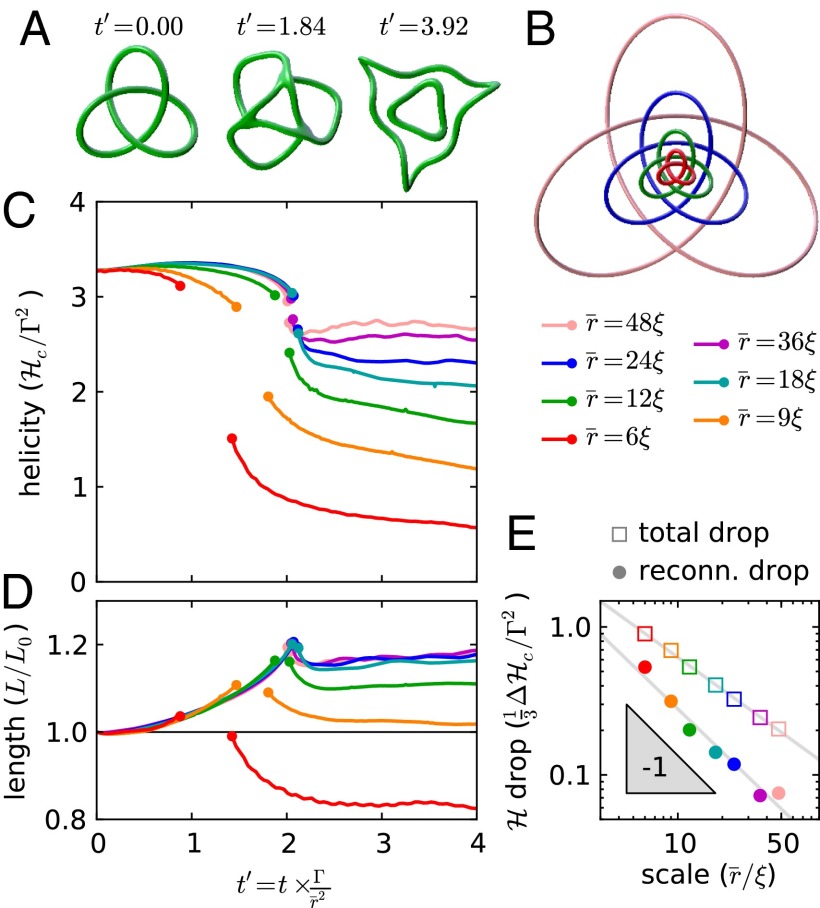Fig. 5.
(A) Renderings of density isosurfaces () for a trefoil vortex knot (), simulated with the GPE. The initially knotted configuration changes to a pair of unlinked rings whose writhe conserves most of the original helicity. (B) Renderings of different sized trefoil knots, where the tube radius is given by the healing length, ξ, which acts as an effective core size for the superfluid vortex. (C and D) The computed center-line helicity () and length for of a range of GPE-simulated trefoil knots. The data are only shown when the distance between vortex lines is . (E) The helicity jump per reconnection event as a function of size ratio for GPE-simulated trefoil knots. The open squares are the total drop between and , whereas the circles indicate the drop during the reconnection event, defined as the missing region in C where the vortex tubes overlap. Larger knots, relative to ξ, are found to conserve helicity better by either measure.

